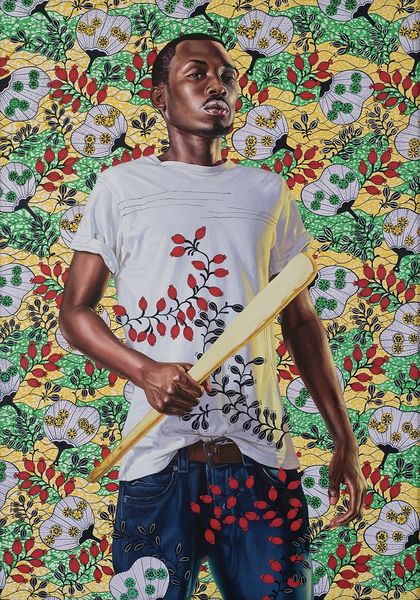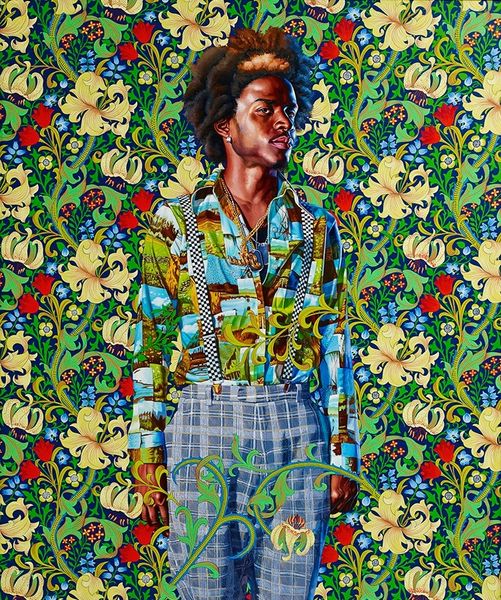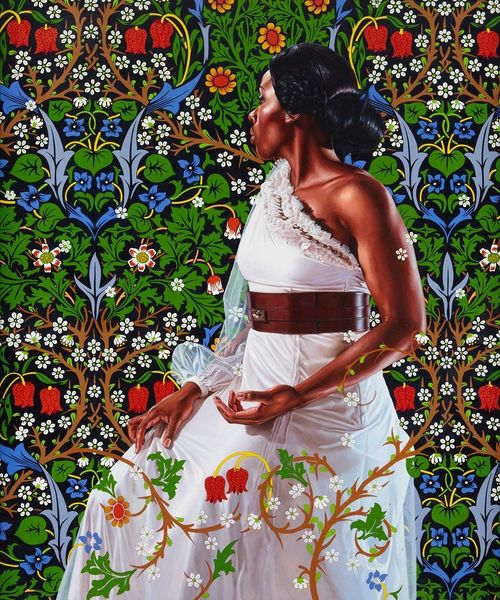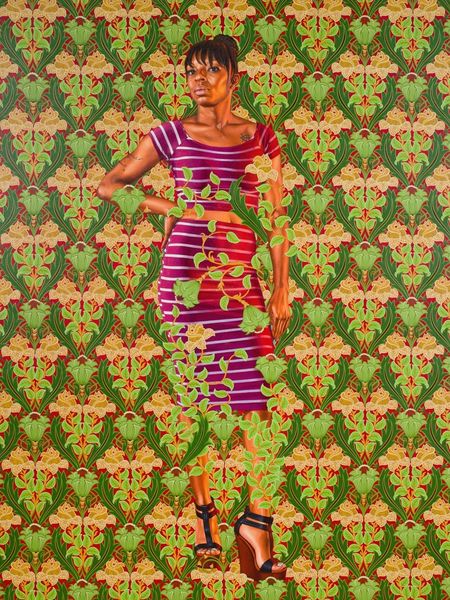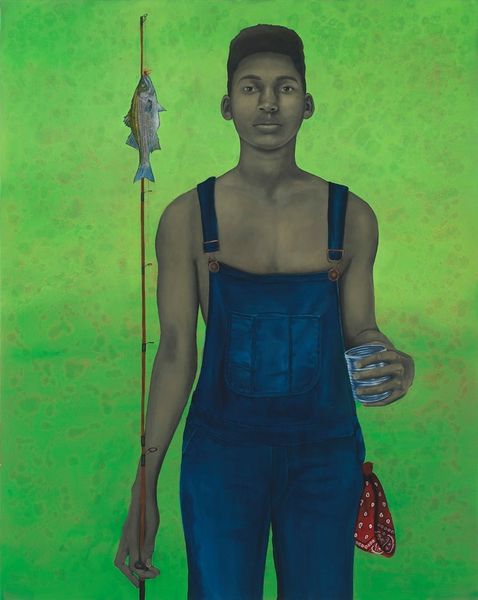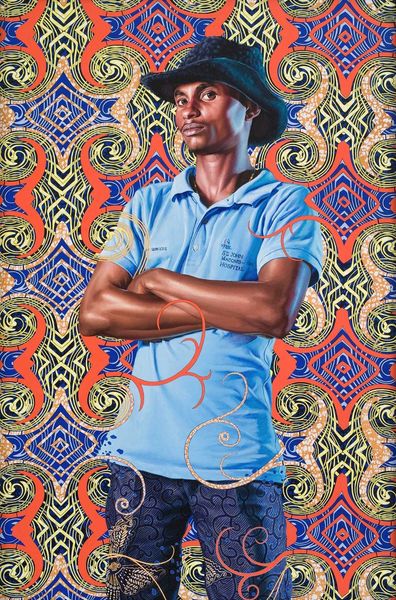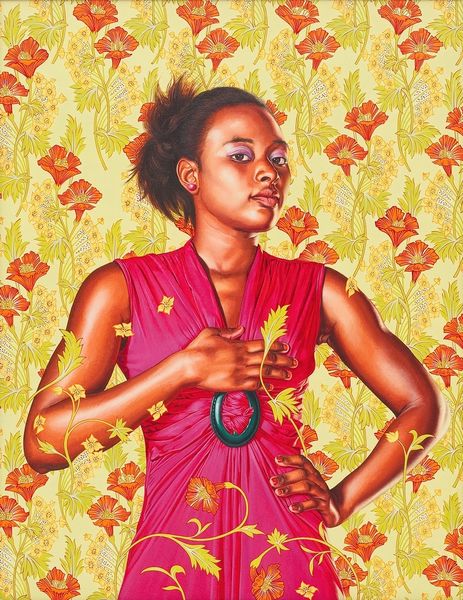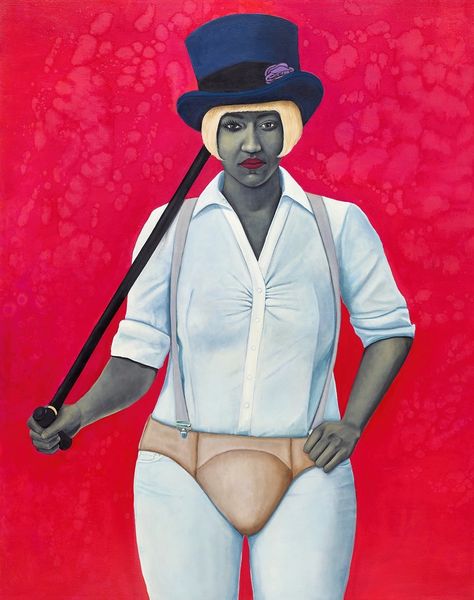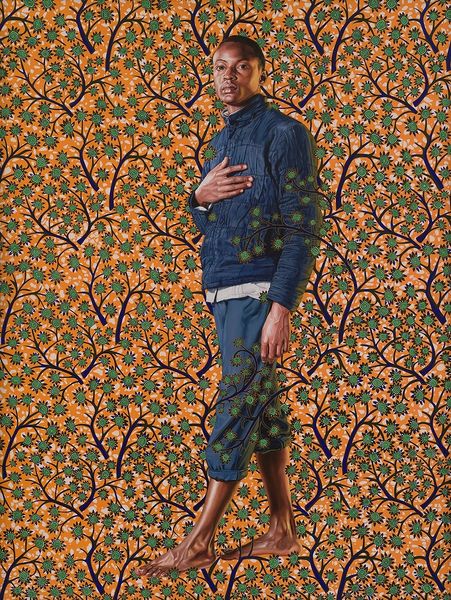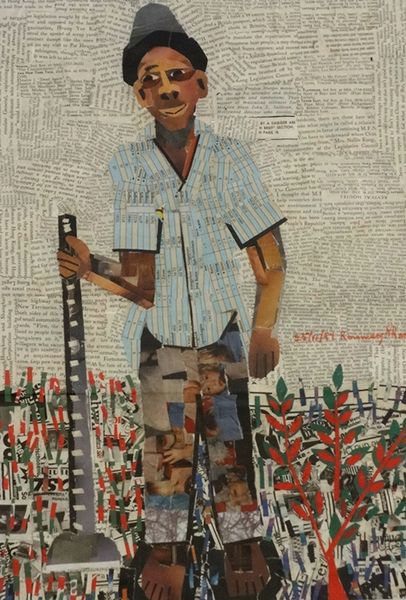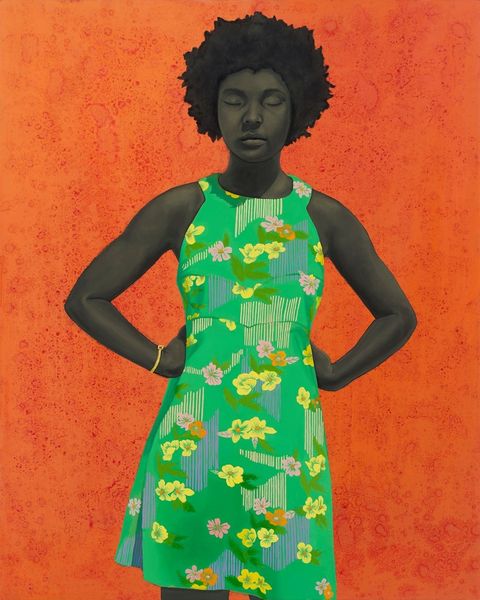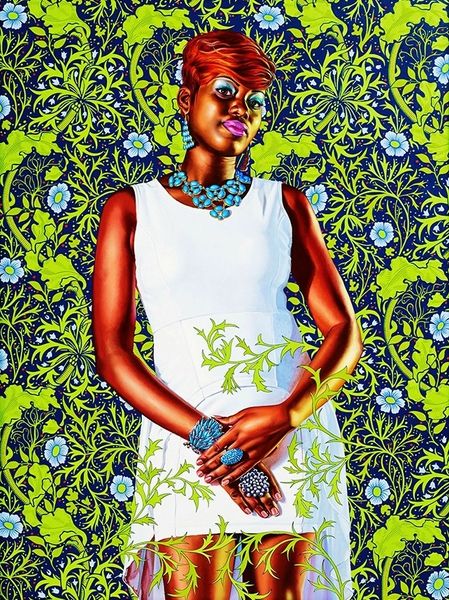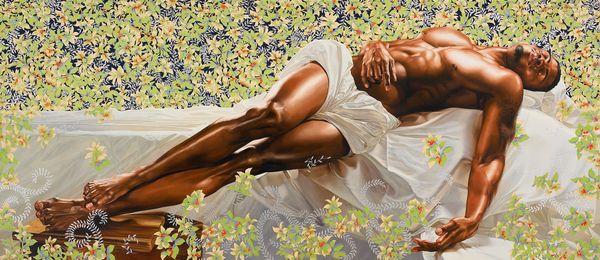
#
pattern-and-decoration
Copyright: Modern Artists: Artvee
Curator: Right, let's discuss Kehinde Wiley's "John Wilmot, 2nd Earl Of Rochester" created in 2013, rendered in acrylic paint. Quite striking, wouldn’t you agree? Editor: It has an interesting mood. The juxtaposition of the model's contemporary streetwear against this elaborate, almost baroque backdrop, it creates a powerful tension, no? Curator: Absolutely. Wiley's consistent practice revolves around subverting portraiture traditions. He's taking a traditionally powerful, aristocratic form and recasting it with young Black men he encounters on the street. Editor: The class implications there are so profound. By positioning Black men within these historically white, European spaces of power, Wiley challenges our notions of who gets to be represented and how. And think of the labor involved—the careful selection, posing, the execution of that detailed background! Curator: Agreed. I see Wiley explicitly engaging with questions of appropriation and representation. It's about inserting Black bodies into the art historical canon. Editor: And interrogating that canon, right? What does it mean to "honor" someone through portraiture? Who gets memorialized, and what values are implicitly endorsed through those choices? His choices disrupt a historical narrative and invites discussions about racial and gendered visibility. The model's pose, combined with his ripped clothing, really speaks to that disruption. It feels defiant. Curator: I think this work resonates due to its scale, too. The monumentality commands attention and almost demands a renegotiation of power structures within the gallery space. The ornate floral patterns also directly clash with the mesh top, don't they? A nod to both consumer culture and artistic traditions in their physical creation and commodification. Editor: Yes. Wiley makes us confront the loaded histories embedded within portraiture. It’s a way to highlight the narratives often absent from those gilded frames. Thanks, that shifted how I consider this. Curator: Indeed, looking closer at the material choices definitely makes the history felt more acutely.
Comments
No comments
Be the first to comment and join the conversation on the ultimate creative platform.
